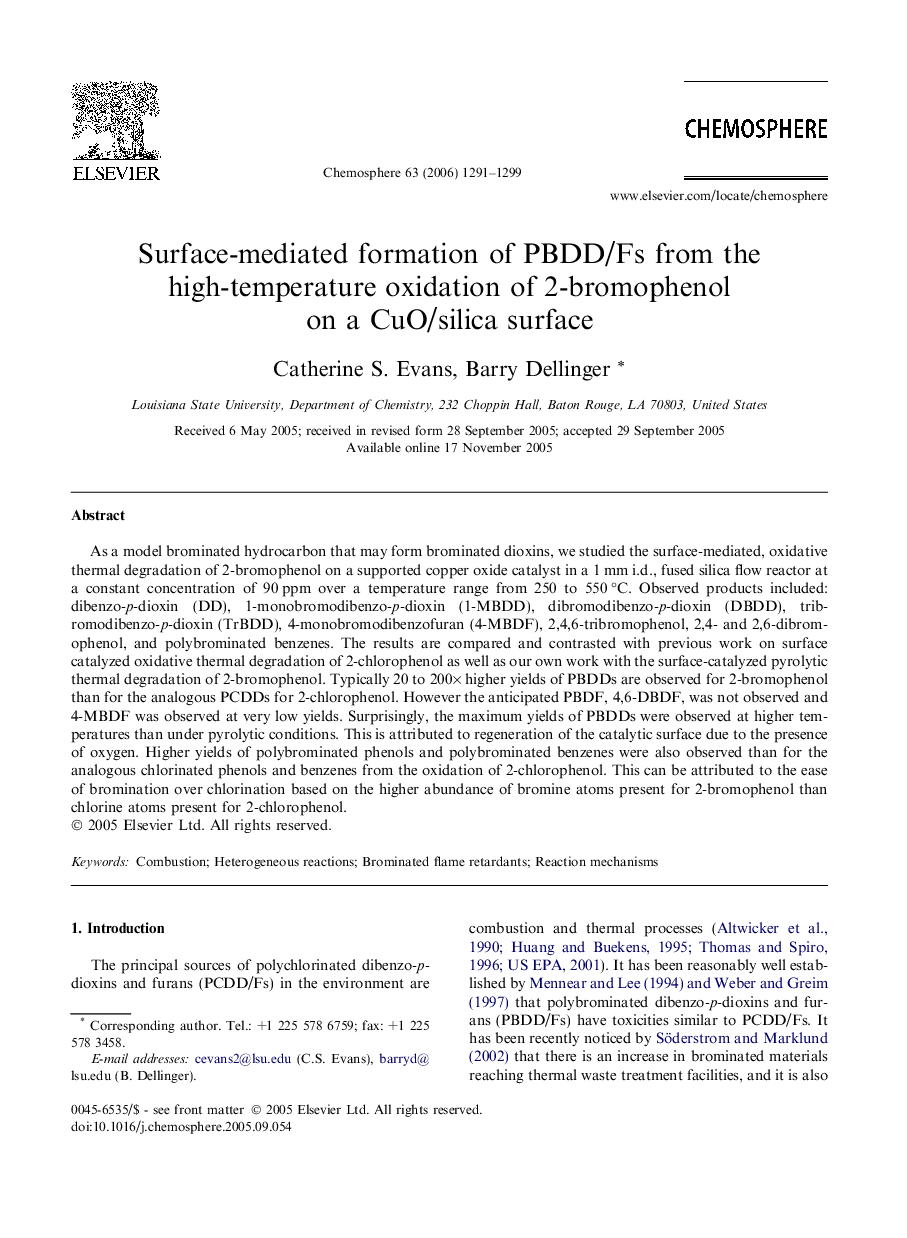| Article ID | Journal | Published Year | Pages | File Type |
|---|---|---|---|---|
| 4416922 | Chemosphere | 2006 | 9 Pages |
Abstract
As a model brominated hydrocarbon that may form brominated dioxins, we studied the surface-mediated, oxidative thermal degradation of 2-bromophenol on a supported copper oxide catalyst in a 1 mm i.d., fused silica flow reactor at a constant concentration of 90 ppm over a temperature range from 250 to 550 °C. Observed products included: dibenzo-p-dioxin (DD), 1-monobromodibenzo-p-dioxin (1-MBDD), dibromodibenzo-p-dioxin (DBDD), tribromodibenzo-p-dioxin (TrBDD), 4-monobromodibenzofuran (4-MBDF), 2,4,6-tribromophenol, 2,4- and 2,6-dibromophenol, and polybrominated benzenes. The results are compared and contrasted with previous work on surface catalyzed oxidative thermal degradation of 2-chlorophenol as well as our own work with the surface-catalyzed pyrolytic thermal degradation of 2-bromophenol. Typically 20 to 200à higher yields of PBDDs are observed for 2-bromophenol than for the analogous PCDDs for 2-chlorophenol. However the anticipated PBDF, 4,6-DBDF, was not observed and 4-MBDF was observed at very low yields. Surprisingly, the maximum yields of PBDDs were observed at higher temperatures than under pyrolytic conditions. This is attributed to regeneration of the catalytic surface due to the presence of oxygen. Higher yields of polybrominated phenols and polybrominated benzenes were also observed than for the analogous chlorinated phenols and benzenes from the oxidation of 2-chlorophenol. This can be attributed to the ease of bromination over chlorination based on the higher abundance of bromine atoms present for 2-bromophenol than chlorine atoms present for 2-chlorophenol.
Related Topics
Life Sciences
Environmental Science
Environmental Chemistry
Authors
Catherine S. Evans, Barry Dellinger,
